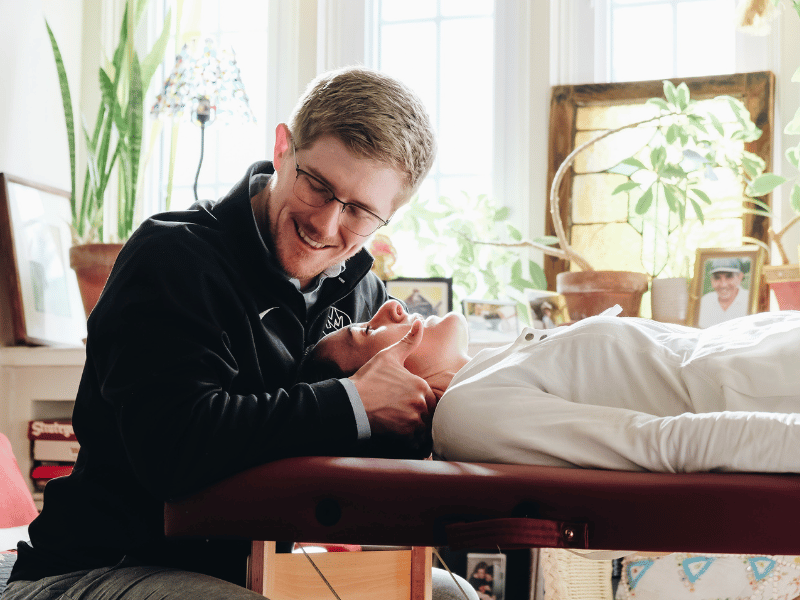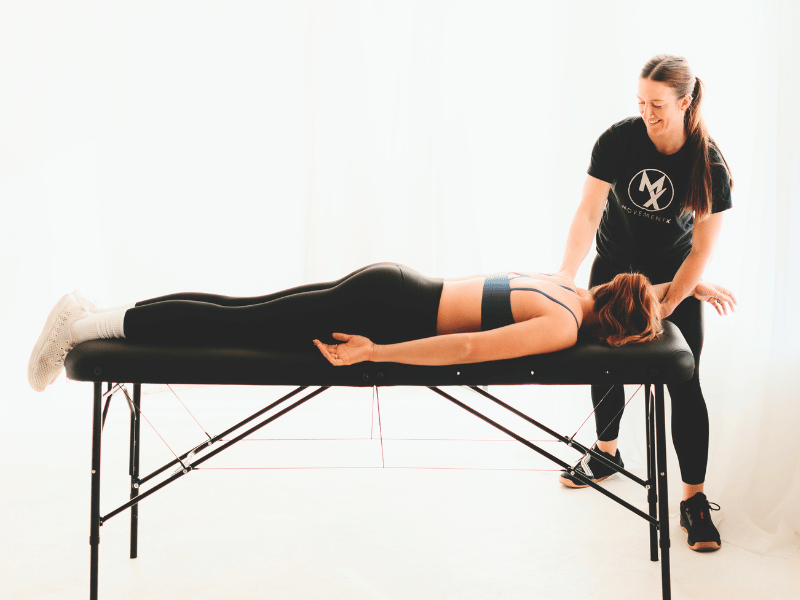Understanding Achilles Tendinitis: A Guide to Symptoms, Treatment, and Recovery
Achilles tendinitis is an overuse injury of the Achilles tendon, the band of tissue that connects calf muscles at the back of the lower leg to your heel bone. It’s not just limited to athletes—anyone can develop this condition, particularly those who suddenly increase the intensity or duration of their physical activities. The prevalence of Achilles tendinitis is noteworthy; studies indicate that it accounts for around 11% of all running injuries and is particularly common in middle-aged people who play sports only on the weekends (known as “weekend warriors”) (Source: Journal of Orthopaedic & Sports Physical Therapy).
Understanding this condition is crucial because it not only affects your ability to perform daily activities but, if left untreated, can lead to more serious complications, such as tendon tears or ruptures. The pain associated with Achilles tendinitis can be acute or chronic, and it often worsens with time. This makes early intervention and proper treatment essential.
Through this page, we aim to equip you with a detailed understanding of the symptoms, causes, and various treatment options for Achilles tendinitis. Additionally, we’ll explore the critical role of physical therapy in managing and recovering from this condition. We’ll also provide practical advice on exercises, stretches, and preventive measures to help you stay active and pain-free. Whether you’re currently experiencing symptoms of Achilles tendinitis or are looking to prevent its onset, this guide offers valuable insights and evidence-based information to support your journey towards recovery and optimal health.
By continuing to read, you’ll gain not only a deeper understanding of Achilles tendinitis but also practical knowledge on how to effectively manage it, with a focus on evidence-based treatment options and the latest research in the field. Let’s embark on this informative journey together, towards better health and mobility.
What is Achilles Tendinitis?
Achilles tendinitis is a common condition that involves the inflammation of the Achilles tendon, the largest tendon in the body. This tendon plays a pivotal role in everyday movement, connecting the calf muscles to the heel bone and facilitating activities like walking, running, and jumping.
People with Achilles tendinitis typically experience pain and stiffness along the Achilles tendon, which can significantly impact their quality of life. The condition can make common activities, such as climbing stairs or even walking, challenging and uncomfortable. For athletes and those who lead active lifestyles, Achilles tendinitis can be particularly debilitating, limiting their ability to perform and potentially sidelining them from their sport or activity.
The onset of Achilles tendinitis is often linked to overuse, especially in activities that put repetitive or intense strain on the Achilles tendon. This overuse can lead to micro-tears in the tendon, causing pain and inflammation. If the condition progresses without appropriate management, it can lead to tendon degeneration and increased risk of tendon rupture, a more severe injury requiring extensive treatment.
Symptoms of Achilles Tendinitis
When it comes to identifying Achilles tendinitis, being aware of the common symptoms is crucial. This condition can manifest in various ways, and its symptoms may vary from person to person. Understanding these symptoms is key to early recognition and timely intervention, which can significantly enhance the effectiveness of treatment and recovery.
Here is a comprehensive list of symptoms frequently associated with Achilles tendinitis. It’s important to note that not everyone will experience all these symptoms, and their intensity can vary:
- Pain along the Achilles Tendon: This is of course the most obvious symptom. The pain is usually localized to the area just above the heel, though it can occur anywhere along the tendon. It typically begins as a mild ache and can progress to more severe pain.
- Stiffness and Tenderness: Especially noticeable in the morning, stiffness can reduce as the tendon warms up with activity. Tenderness may be felt when the area is touched or pressed.
- Swelling and Thickening: The Achilles tendon may appear swollen or thicker than usual. This swelling can be constant or may worsen throughout the day with activity. The affected area may also feel unusually warm to the touch.
- Reduced Range of Motion: Moving the ankle and foot may become difficult, impacting activities like walking or running.
- Difficulty Performing Daily Activities: Tasks that involve walking, running, or climbing may become challenging.
It’s important to remember that these symptoms can sometimes indicate other conditions. Therefore, an evaluation by a skilled physical therapist is essential for an accurate diagnosis. If you’re experiencing any of these symptoms, particularly if they persist or worsen over time, seeking advice from a healthcare professional is advisable. Early intervention can often prevent the condition from becoming chronic and more challenging to treat.
Causes of Achilles Tendinitis
Understanding the causes of Achilles tendinitis involves recognizing a range of factors that are frequently associated with its development. While these factors can contribute to the onset of the condition, it’s important to note that their presence does not guarantee its occurrence. Individual susceptibility varies, and Achilles tendinitis can result from a combination of several risk factors.
Here are some common causes or risk factors often linked to Achilles tendinitis:
- Overuse: This is one of the primary contributors to Achilles tendinitis. Activities that place repetitive or intense strain on the Achilles tendon, such as running or jumping, can lead to micro-tears in the tendon, potentially causing inflammation and pain.
- Sudden Increase in Physical Activity: Individuals who rapidly increase the intensity, duration, or frequency of their activities are at a higher risk. This sudden change can be too much for the tendon to handle, leading to overuse injuries.
- Inadequate Footwear: Wearing shoes that lack proper support, especially during physical activities, can increase the strain on the Achilles tendon.
- Tight Calf Muscles: Having tight calf muscles can put extra stress on the Achilles tendon, particularly during activities involving running or jumping.
- Decreased Strength: Having decreased strength in the hip, thigh, and ankle muscles may lead to an altered load through the Achilles, potentially leading to Achilles tendinitis.
- Age: The risk of developing Achilles tendinitis increases with age. As people age, tendons can become less flexible and more prone to injury.
- Physical Conditions: Certain physical conditions, such as flat feet or a naturally tight Achilles tendon, can increase the likelihood of developing this condition.
- Training or Environmental Conditions: Training on uneven surfaces, or in poor conditions, can contribute to the development of Achilles tendinitis.
- Medical Conditions and Medications: Some systemic diseases, like rheumatoid arthritis or diabetes, can increase the risk. Certain types of medications, such as antibiotics known as fluoroquinolones, have also been linked to tendon problems.
- Previous Injury: Individuals who have previously injured their Achilles tendon or calf muscles may be more susceptible to developing Achilles tendinitis.
It’s important to recognize that these factors can interact in complex ways, and their impact can vary from person to person. Being aware of these risk factors and understanding how they can contribute to the development of Achilles tendinitis is vital for prevention and early intervention. If you’re concerned about any of these risk factors or have experienced symptoms of Achilles tendinitis, consulting with a physical therapist can provide you with personalized advice and care.
Treatment Options for Achilles Tendinitis
Effective management of Achilles tendinitis involves a multifaceted approach that can include a combination of treatments. The choice of treatment largely depends on the severity of the condition and the specific needs of the individual. Here are various treatment options typically considered:
- Rest and Activity Modification: One of the first steps in treating Achilles tendinitis is to reduce activities that cause pain to the tendon. This doesn’t mean complete rest, but rather modifying activities to avoid further aggravating the tendon.
- Physical Therapy: Physical therapy plays a crucial role in the treatment of Achilles tendinitis. It involves various techniques such as stretching exercises, strengthening activities, and manual therapy. Therapists may also use modalities like ultrasound or laser therapy to reduce pain and inflammation. A detailed exploration of physical therapy’s role will be discussed in the next section.
- Eccentric Strengthening: This specific type of strengthening exercise has been shown to be particularly effective in treating Achilles tendinitis. It involves lengthening the muscle while it’s under tension.
- Pain Relief Medications: Over-the-counter pain relievers such as ibuprofen, naproxen, or acetaminophen can be used to reduce pain and inflammation. However, these should be used cautiously and under the guidance of a healthcare professional.
- Orthotic Devices: Custom orthotic devices or shoe inserts can provide better support for the foot and ankle, reducing stress on the Achilles tendon.
- Immobilization: In cases where the pain is severe, immobilizing the foot and ankle with a boot or cast can allow the tendon to rest and heal.
- Corticosteroid Injections: In some cases, corticosteroid injections may be considered to reduce severe inflammation. However, these are used with caution, as they can sometimes lead to tendon weakening or rupture.
- Surgery: Surgery is typically considered as a last resort and is usually only recommended if the pain does not improve after 6 months of non-surgical treatment. The surgery involves removing damaged tissue and repairing the Achilles tendon.
Physical therapy, which should be a central component of treatment, offers more than just symptom relief. It also focuses on addressing the underlying causes of Achilles tendinitis and provides strategies to prevent recurrence. The benefits of physical therapy extend beyond immediate pain management and play a vital role in long-term recovery and maintenance of tendon health, which will be further elaborated in the next section.
How Physical Therapy can help with Achilles Tendinitis
Physical therapy is a cornerstone in the management and treatment of Achilles tendinitis. Working with a skilled physical therapist can significantly enhance the healing process, reduce pain, and prevent future injuries. The approach is multifaceted, focusing not only on immediate symptom relief but also on long-term rehabilitation and prevention.
An important aspect of effective physical therapy for Achilles tendinitis is personalized exercise prescription. Therapists design tailored programs that include specific exercises aimed at stretching and strengthening the calf muscles and the Achilles tendon. This gradual and controlled approach helps in reducing stress on the tendon, promoting healing, and preventing further injury.
Manual therapy techniques are another crucial element of physical therapy. These techniques, which may include soft tissue massage, mobilization, and other hands-on approaches, aim to improve blood circulation to the affected area, reduce scar tissue, and enhance tendon mobility. Improved circulation accelerates the healing process, while breaking down scar tissue helps in restoring the tendon’s natural movement.
In addition to exercise and manual therapy, physical therapists often incorporate education into their treatment plans. They provide valuable insights into proper foot and ankle mechanics, posture correction, and ergonomic adjustments in daily activities. This educational component is vital in helping patients understand their condition, the importance of adherence to the prescribed exercises, and how to avoid activities that may exacerbate the condition.
Our Top Exercises & Stretches for Achilles Tendinitis
Managing Achilles tendinitis effectively often involves specific exercises and stretches that target the calf muscles and the Achilles tendon. These exercises are designed to strengthen and stretch the affected area, promoting healing and reducing the risk of further injury. Here are three of the best exercises and stretches for Achilles tendinitis:
1. Calf Stretch Against a Wall (easy)
- Stand facing a wall with your hands placed on the wall at eye level.
- Move the leg with the affected Achilles tendon back, keeping the heel on the floor and the leg straight.
- Bend the opposite knee forward while keeping the back leg straight and heel firmly on the ground.
- Hold the stretch for 20-30 seconds, feeling a gentle stretch in the calf of the back leg.
- Repeat 2-3 times, ensuring there is no pain, only a mild stretch.
2. Seated Calf Raises (moderate)
- Sit on a chair with your feet flat on the ground.
- Keep your toes pointed forward and place a small weight (like a book or a small dumbbell) on your knees for added resistance, if comfortable.
- Slowly raise your heels off the ground as high as possible, focusing on contracting the calf muscles.
- Hold at the top for a moment, then slowly lower your heels back to the ground.
- Perform 2-3 sets of 10-15 repetitions. Ensure the movement is controlled and there’s no pain in the Achilles tendon.
3. Eccentric Heel Drops (advanced)
- Stand on the edge of a step with your feet parallel.
- Shift your weight onto the affected leg.
- Slowly lower your heel down below the step level, keeping your knee straight. You should not feel any pain in the tendon with this exercise.
- Use the unaffected leg to return to the starting position.
- Perform 3 sets of 10-15 repetitions, ensuring the movement is controlled and pain-free.
Disclaimer: While these three exercises can be effective for managing Achilles tendinitis, it’s crucial to consult with a MovementX physical therapist before starting any exercise program. A licensed therapist can provide a personalized assessment and ensure that the exercises are appropriate for your specific condition and fitness level. Remember, each individual’s case is unique, and what works for one person may not be suitable for another.
Conclusion
As we reach the end of our comprehensive guide on Achilles tendinitis, it’s important to reflect on the key points we’ve covered and consider how this information applies to your individual situation. Have you experienced any symptoms of Achilles tendinitis? Are there aspects of your daily routine or physical activities that could be contributing to stress on your Achilles tendon? Understanding your own risk factors and symptoms is the first step toward effective management and prevention.
Remember, while Achilles tendinitis can be a challenging condition, it’s also one that responds well to proactive management, especially when addressed early. Physical therapy plays a vital role in this process, offering tailored treatments and exercises that not only alleviate symptoms but also target the underlying causes of the condition.
If you’re dealing with symptoms of Achilles tendinitis, or if you’re looking to prevent its onset, consider reaching out for professional help. A session with a MovementX physical therapist can provide you with personalized care and guidance. Our therapists are equipped to assess your condition, design a targeted treatment plan, and support you through your recovery journey.
Don’t let Achilles tendinitis hold you back from enjoying your daily activities or achieving your athletic goals. Request a session with MovementX today and take the first step towards optimal tendon health and improved quality of life. Your journey to recovery and prevention starts here.
References
- Albers IS, Zwerver J, Diercks RL, Dekker JH, Van den Akker-Scheek I. Incidence and prevalence of lower extremity tendinopathy in a Dutch general practice population: a cross sectional study. BMC Musculoskelet Disord. 2016;17:16. doi:10.1186/s12891-016-0885-2
- Aicale R, Tarantino D, Maffulli N. Overuse injuries in sport: a comprehensive overview. J Orthop Surg Res. 2018;13(1):309. doi:10.1186/s13018-018-1017-5
- Silbernagel KG, Thomeé R, Eriksson BI, Karlsson J. Continued sports activity, using a pain-monitoring model, during rehabilitation in patients with Achilles tendinopathy: a randomized controlled study. Am J Sports Med. 2007;35(6):897-906. doi:10.1177/0363546506298279
- Magnussen RA, Dunn WR, Thomson AB. Nonoperative treatment of midportion Achilles tendinopathy: a systematic review. Clin J Sport Med. 2009;19(1):54-64. doi:10.1097/JSM.0b013e31818ef090
- Roos EM, Engström M, Lagerquist A, Söderberg B. Clinical improvement after 6 weeks of eccentric exercise in patients with mid-portion Achilles tendinopathy – a randomized trial with 1-year follow-up. Scand J Med Sci Sports. 2004;14(5):286-295. doi:10.1111/j.1600-0838.2004.378.x
- Kearney RS, Parsons N, Metcalfe D, Costa ML. Injection therapies for Achilles tendinopathy. Cochrane Database Syst Rev. 2015;(5):CD010960. doi:10.1002/14651858.CD010960.pub2
- Jonsson P, Alfredson H, Sunding K, Fahlström M, Cook J. New regimen for eccentric calf-muscle training in patients with chronic insertional Achilles tendinopathy: results of a pilot study. Br J Sports Med. 2008;42(9):746-749. doi:10.1136/bjsm.2007.039545
- Azevedo LB, Lambert MI, Vaughan CL, O’Connor CM, Schwellnus MP. Biomechanical variables associated with Achilles tendinopathy in runners. Br J Sports Med. 2009 Apr;43(4):288-92. doi: 10.1136/bjsm.2008.053421. Epub 2008 Oct 23. PMID: 18948352.
About the Author
Dr. Romin Ghassemi is a physical therapist in Fuquay-Varina, North Carolina. He specializes in Orthopedic Conditions, Sports Injuries, and Neurological Conditions. Romin Ghassemi utilizes a variety of methods such as hands-on therapy, functional fitness, and mobilization to help you regain your strength, mobility, and vitality. Whether you’re an athlete recovering from an injury or just looking to enhance your overall well-being, he’s here to support you every step of the way!
Share This Page
More Conditions We Treat
Found this page interesting? Learn more about other conditions we treat:





